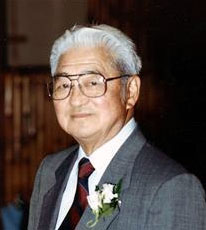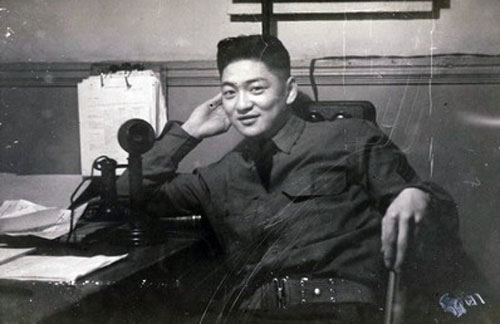 Former Resident Was Member of Most Decorated Military Unit in World War II By DAVE KIFFER July 24, 2010
Hagiwara was born and raised in Ketchikan and served in the military in World War II. Like all local Japanese American residents he was swept up in the controversy over the World War internment of Japanese American citizens. Hagiwara was born on March 7, 1919, the second son of local bakery owners Frank and Shima Hagiwara. According to an oral history at the Alaska State Museum that Hagiwara sat for in 1990, his father Chokichi "Frank" Hagiwara and two friends left Seattle, Washington, in 1909, hoping to "make a fortune" in Alaska. They intended to earn money in Ketchikan before continuing to interior Alaska but Frank Hagiwara decided to stay in Ketchikan. In 1916, Frank Hagiwara returned
to Japan for an arranged marriage to Shima Kitagawa, a school
teacher. Frank and Shima had four children in Ketchikan. Hagiwara also noted that he
had both "hakujin" (Caucasian) and Japanese friends
in Ketchikan, adding that discrimination was not a problem until
World War II broke out. In the oral history, Hagiwara
said that Fred Van Gilder encouraged him to join the Alaska Guard
in 1940. He and several other local Guardsmen were sent to Port
Chilkoot in Haines when the state Guard was nationalized at the
outbreak of war.
En route south, as his ship approached Annette Island, Pat Hagiwara asked the captain if he could stop to see his father, saying that he might never see him again. The captain said, "No." Gazing ashore, after docking,
Pat Hagiwara saw a jeep racing down to the dock toward the ship.
"Patrick Hagiwara," boomed over the jeep's loudspeaker
as the chaplain, who was driving, called "jump in." Pat Hagiwara joined the 442
Regimental Combat Team in Europe. Charlie Tatsuda was sent to
military intelligence school in Minnesota. He graduated as an
interpreter and was assigned to the paratroopers. During the war, Hagiwara was a decorated veteran - and staff sergeant - in the 442 Regimental Combat Team. The 442, made up primarily of family members of the Japanese Americans who were interned during the war, was one of the most decorated in U.S. history with more than 1,000 Purple Hearts and 21 Congressional Medal of Honor winners. It fought through Europe, most notably in Italy and France. Hagiwara remained proud of his service and was active in both military reunions and the Nisei Veterans Committee of Seattle through the remainder of his life. Hagiwara married Misako Kondo in 1942. The couple moved to Seattle in 1945, while Hagiwara attended the University of Washington, graduating with a degree in electrical engineering. He worked as an engineer and manager for Boeing, retiring in 1986 after 36 years with the company. The family moved to the Rainier Valley in 1951 and their children were the first Japanese Americans to attend the Brighton Elementary School, according to an funeral home obituary written by the family. The Hagiwaras moved to Bellevue in 1968. In addition to serving as a coach for many of his six children's sporting teams, Hagiwara was also a member of the vestry of St. Peter's Episcopal, following in the steps of his father as a church leader. Although Hagiwara never returned to live in Alaska after World War II, he was an active member of the Alaska Yukon Pacific Pioneers and rarely missed the Ketchikan Reunion Picnic that is held each year in Edmonds. He also kept in touch with many of his Ketchikan High School classmates over the years. He is survived by his wife, Misako, his children Kathleen Hagiwara Purcell of Issaquah, Washington; Patrick Hagiwara of Northridge, California; Janet Cantelon of Des Moines, Washington; Grace Hagiwara of Mountain View, California; Juli Alsgaard of Glendale, California and Robert Hagiwara of Winnipeg, Manitoba; two grandchildren; four great-grandchildren and numerous nieces and nephews.
On the Web:
Dave Kiffer is a freelance writer living in Ketchikan, Alaska. Contact Dave at dave@sitnews.us
|
||

